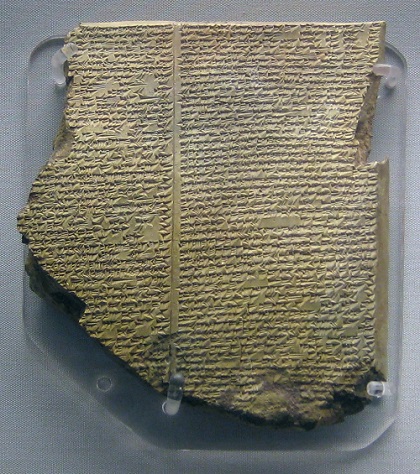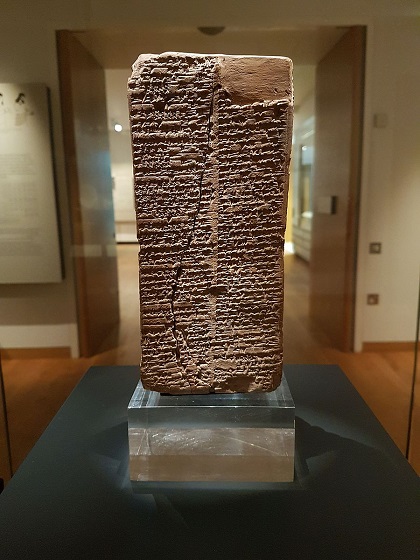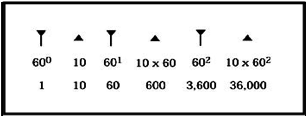Outside of Genesis, what do we know about the flood?
 Epic of Gilgamesh. British Museum. / Wikimedia Commons
Epic of Gilgamesh. British Museum. / Wikimedia Commons
Noah’s flood is one of the turning points in the Biblical narrative of Genesis. The flood is a re-creation of sorts where the old world is done away through God’s judgment to give way for the new. But outside of Genesis what do we know about the flood? Is the flood a historic event or a legend? Can the Genesis account be trusted for the material it presents? Or is it simply a retelling of a Mesopotamian myth?
Perhaps the most famous parallel reading that comes to mind is the Epic of Gilgamesh. It is believed that the epic was written around 2000 BCE, although the oldest tablets that have survived date from around 700 BCE. The epic relates the quest for the eternal life of the Sumerian king Gilgamesh.
Gilgamesh is on a journey to find Utnapishtim, a mysterious figure who has received the gift of eternal life from the gods. The most important tablet of this epic is the 11th tablet which gives us the story of the flood.
When Gilgamesh eventually finds Utnapishtim, he asks him how he achieved eternal life. Utnapishtim relates that in ancient times there was a great flood and that the god Ea informed him of the arrival of this flood and wanted him to build an ark for himself. After the ark is sealed with pitch and bitumen Utnapishtim boards the ark along with his family, craftsmen, and “all the animals of the field.”
Then comes a terrible flood. Utnapishtim is terrified by the flood and begins to weep. The flood lasts 6 days and 7 nights. The ark eventually lodges on a mountain and Utnapishtim releases a pigeon, a swallow and a raven for the purpose of finding dry land. When the raven does not return, Utnapishtim and his family descend from the ark. Utnapishtim presents a sacrifice to the gods and Enlil grants Utnapishtim and his wife eternal life.
Another legend that is just as old or even older than the Epic of Gilgamesh is the Epic of Atra-Hasis. The Atra-Hasis epic is found in 3 tablets belonging to the Akkadian period (1650 BCE). These tablets are about 1000 years older than the oldest tablet containing the Gilgamesh story! While the first tablet is concerned with the creation of the world, the third tablet contains the flood narrative.
According to this narrative, the god Enki warns Atra-Hasis about a future flood and orders an ark to be built. The ark has a roof, upper and lower decks and is insulated with pitch. Atra-Hasis boards the ship with his family and animals. The flood begins and the gods become terrified. After 7 days and 7 nights, the flood comes to an end and Atra-Hasis offers a sacred sacrifice. The god Enlil is angry that some people have survived the flood. Enlil confronts Enki for fooling him. Eventually, Enki and Enlil reveal that they will resort to other methods to control the human population.
Many skeptics are quick to suggest that these epics are the sources for the Biblical account. But is it really so? It is true that the legends of ancient Mesopotamia share some similarities with the Biblical narrative, but the differences are often overlooked. The similarities and differences between these epics and Noah's flood count can be summarized as follows.
Similarities:
- A punishing flood is sent by a divine decision;
- A man is divinely chosen and he is asked to build an ark to save himself, his family and animals;
- A great flood destroys the rest of mankind;
- The ark hits the ground on a mountain;
- Birds are sent to find livable land;
- The hero offers a sacrifice to a divinity;
- Mankind begins to multiply on earth again.
Differences:
- The gods of Mesopotamia send the flood because men are too noisy. In the Old Testament, God sends the flood in response to evil and men’s wickedness.
- The gods of Mesopotamia try to conceal the flood from human beings. In the Old Testament, God warns mankind in advance.
- In the Mesopotamian epic, the hero is saved by the cunning plan of a god. In the Old Testament God reveals from the beginning that judgment is coming and that, unless others repent, only Noah and his family will be saved.
- The ark in the Epic of Gilgamesh is in the form of a cube and is not well-suited to float. In the Old Testament, the size of the ark is similar to that of today's ships and is well-suited to float.
- The number of days the floods lasted is different. While the floods lasted for 6 or 7 days and 7 nights in both the Gilgamesh and Atra-Hasis, the flood in the Old Testament narrative narrative lasted for 40 days; it was 150 days before the waters began to recede, and the land was dry after a total of 1 year and 10 days (see Genesis 7:11, 8:14).
- In the Mesopotamian epics, the ark is boarded by the family of the protagonist and craftsmen. In the Old Testament narrative, there is no mention of craftsmen.
- The details concerning the sending of the birds are different in the Gilgamesh epic and the Old Testament. The Atra-Hasis epic has no mention of birds.
- The hero of the Mesopotamian epic leaves the ark by his own initiative and offers a sacrifice to gain favor from the gods, while in the Old Testament narrative Noah remains on board until God calls him, and his sacrifice is offered as a means of gratitude.
- In the Atra-Hasis narrative, the recovery of the earth and the proliferation of people takes place through divine intervention. In the Old Testament, this multiplication happens naturally through the flood’s survivors.
Former professor of Assyriology in Birmingham University, Wilfred Lambert, and Rankin Professor Emeritus of Hebrew and Ancient Semitic languages of the University of Liverpool, Alan Millard, believe that it is very difficult to defend the case that the Old Testament account was borrowed or inspired from Sumerian accounts. Due to the multiple differences in the texts, the claims of dependency are extremely weak.
Professor Emeritus of Egyptology of the University of Liverpool, Kenneth Kitchen, believes that it is more reasonable to view the Mesopotamian and Biblical accounts as parallel traditions of an ancient historical event. To me, this sounds more reasonable. Perhaps the Mesopotamian and Biblical accounts are simply the retelling of a historical event presented through differing theological worldviews.
The scope of the flood is also a matter of debate. Even though Scripture clearly states that the flood waters covered the entire earth, could it be that this “entire earth” is simply Mesopotamia, the entirety of the world that was known to the author at the time? Several flood layers exist in Mesopotamian archaeology. To be perfectly honest, I don’t think it is even a matter of debate to argue whether or not a great flood happened in ancient Mesopotamia. The flood layers are there.
Did this flood extend to the rest of the globe? Perhaps. The strongest case for a universal flood is the universality of this story. There are over 200 cultures around the world that have some sort of a flood story. A simple myth spreading from one tribe to another by word of mouth in this way has little possibility to be remembered so universally.
As Kenneth Kitchen argues, perhaps parallel narratives of the flood point to a historical event common to the history of the ancient world tribes. The differences perhaps due to the interpretation of the same phenomenon by different tribes within the context of their worldview. In this sense, we can say that the Old Testament speaks of the same disaster in the framework of the Hebrew worldview and monotheistic theology. The flood story seems to present traces of a traumatic event common to mankind across many tribes and cultures rather than a simple myth passed from one generation to the next. Suffice to say that the Old Testament narrative does not strike me as a simple mythological replica of Sumer, rather a parallel narrative of the same historical event.
THE WELD-BLUNDELL PRISM
In 1922, Herbert Weld-Blundell discovered a prism of 20 centimeters in length and 9 centimeters in width, containing cuneiform script on all four sides.
The prism dates from around 1800 BCE and it is the most comprehensive list ever discovered of Sumerian kings who lived between 3200 and 1800 BCE. This is why it is also known as the Sumerian Kings List.
 Sumerian Kings List. Ashmolean Museum. / Wikimedia Commons.
Sumerian Kings List. Ashmolean Museum. / Wikimedia Commons.The list gives the names of the kings who lived before and after a flood event. 8 kings are recorded to have lived before it. The mention of the flood is as follows:
“…Then the flood swept over. After the flood had swept over, and the kingship had descended from heaven, the kingship was in Kish.”
The feature that separates this prism from the Gilgamesh epic is that this is not legendary poetry; it is written more as a historical record. An interesting detail found in the inscription is that the pre-flood kings have a much longer lifespan than the kings who lived after the flood, but these numbers are inflated when compared to the Biblical record. The first eight kings on the list reigned by periods ranging from 43,000 to 18,600 years. After the flood, the first king, Jushu, reigned for 1,200 years. The longest post-flood sovereignty is around 1,500 years. As the years keep decreasing we arrive at king Gilgamesh, who ruled around 2600 BCE. His reign is recorded as having lasted 126 years. The numerical decline after the flood shows parallelisms with the Biblical account.
Raul Lopez, Ph.D. in Atmospheric Science from Colorado State University, has an interesting thesis regarding the numbers in this prism. Lopez observes that the prism is a Babylonian copy of an earlier Sumerian record. Both the Babylonians and the Sumerians used a similar numbering system based on the number 60. However, differences existed in how these were represented in cuneiform writing. As seen in the table below, it could have been possible for a Babylonian scribe to interpret A Sumerian 60 as 60² (3600).
 Babylonian cuneiform.
Babylonian cuneiform.
 Sumerian cuneiform.
Sumerian cuneiform.If this is the case, an argument could be made for the reign of the first 8 kings before the flood to have been 7000 years instead of 214,200. In the same manner, the 6695 years representing the 8 generations between Adam and Noah could be expressed as 237,600.
CONCLUSION
To sum it all up, the Weld-Blundell prism shows us a record of the flood outside of legendary writings and shows an interesting parallelism as far as years of life are concerned before and after the flood. Both the Gilgamesh Epic and the Epic of Atra-Hasis show some similarities to the Biblical flood account, but have enough differences that make the dependency of the Biblical text to these works highly unlikely.
Although it is difficult to know whether this flood was local or universal both in Mesopotamia and in numerous cultures around the world we have enough stories of floods that make this flood a universal trauma shared by all mankind rather than a simple localized myth.
BIBLIOGRAPHY:
- George, Andrew, ed. “The Epic of Gilgamesh.” Penguin Classics. 1999.
- Kitchen, K.A. The Bible in Its World. Exeter: Paternoster, 1977. p. 28-30.
- Lambert, W.G. and Millard, A.R. “Atra-Hasis: The Babylonian Story of the Flood.” Oxford: Clarendon, 1969.
- Lopez, Raul. “The Antediluvian Patriarchs and the Sumerian King List.” Journal of Creation 12, no 3, Aralik 1998, p. 347-357.
- Walton, J. “The antediluvian section of the Sumerian King List and Genesis 5.” Biblical Archaeologist 44, 1981, p. 207–208

Las opiniones vertidas por nuestros colaboradores se realizan a nivel personal, pudiendo coincidir o no con la postura de la dirección de Protestante Digital.
Si quieres comentar o